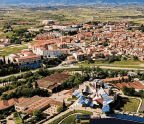A BEGINNER’S GUIDE TO BRAZIL
Since the first vines were introduced to Brazil in 1532 the industry has experienced its share of turbulence, but the overall progress has been astonishing given the challenges it has faced over the years. Investment in technology, infrastructure, training and organisation of the wine sector has ensured a remarkable improvement in the quality of Brazil’s wines over the past three decades.
Vines brought into the country by immigrants were first planted in the state of São Paulo. However, climatic conditions, notably heat and excessive humidity, were not ideal for the European varieties and the experiment was swiftly abandoned. Subsequently, Portuguese settlers tried to cultivate vines in several different areas, looking for the most suitable location.
The area that responded best to viticulture was Rio Grande do Sul, Brazil’s southernmost state, bordering Argentina and Uruguay. Initially the wine industry had to rely on high-yielding hybrids and American grape varieties such as Niagara, Isabel and Concord, until in the 1970s international companies started to invest, bringing know-how and technology, as well as new cuttings
You’re reading a preview, subscribe to read more.
Start your free 30 days





